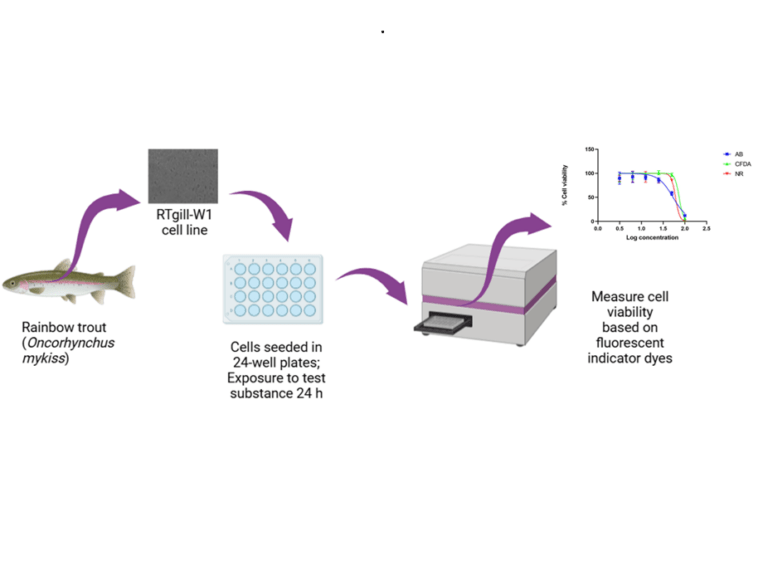The RTgill-W1 cell line assay describes a 24-well plate format fish cell line acute toxicity test using the permanent cell line from rainbow trout (Oncorhynchus mykiss) gill, RTgill-W1.
The assay procedure has been proven to work for chemicals with a wide range of physico-chemical properties, such as water solubility as surrogate for achievable aqueous concentrations (10-3 to 106 mg/L), logKOW as surrogate for hydrophobicity (-4 to 7) and logHenry’s law constant as surrogate for volatility (0 to -13).
In addition, this test can be applied to aqueous mixtures of known or unknown composition, complex reaction products or Biological materials (UVCB) or multi-constituent substances. There are some exceptions such as neurotoxic chemicals and allyl alcohols.
After 24 h of exposure to the respective test chemical, cell viability is assessed based on three fluorescent cell viability indicator dyes, measured on the same set of cells: Resazurin-based dye for measuring cell metabolic activity; 5-carboxyfluorescein diacetate acetoxy methyl ester (CFDA-AM) for assessing the integrity of the cell membrane; and Neutral Red, which evaluates the integrity of the lysosomal membrane.
The data are expressed as the percent cell viability of unexposed control values versus the test chemical concentration. The resulting concentration-response curves serve to determine the effective concentrations causing 50% loss in cell viability, i.e. the EC50 value.
The test is designed to predict fish acute toxicity in product testing, range-finding and pre-screening before conducting a full fish acute or other fish-based toxicity test, generation of toxicity information to be used for hazard assessment in combination with other lines of evidences (e.g., Quantitative Structure Activity Relationships (QSAR), weight of evidence (WoE)) within Integrated Testing Strategy (ITS)/Integrated Approach to Testing and Assessment (IATA).

